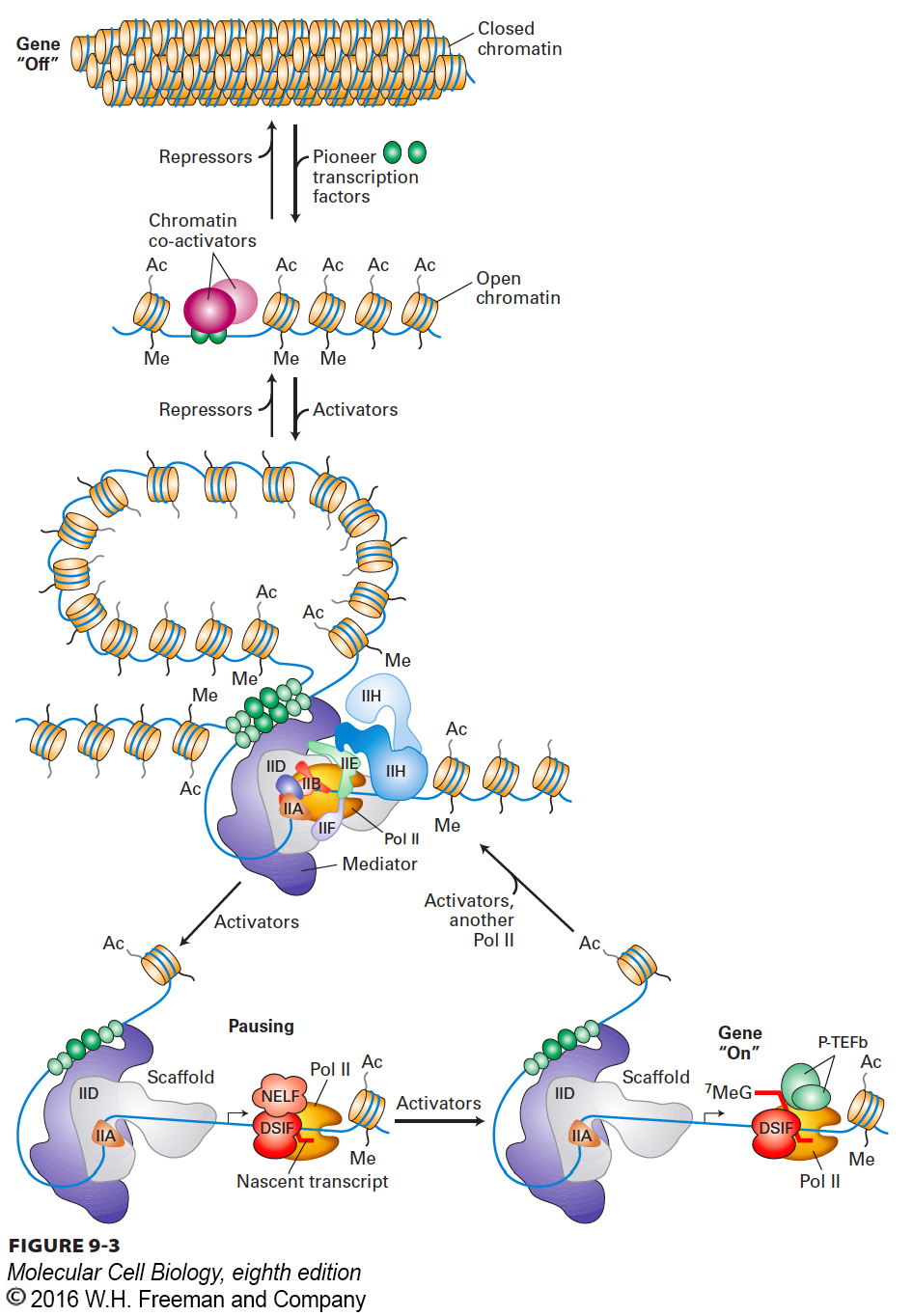
FIGURE 9- 3 Overview of eukaryotic transcriptional control. Inactive genes are assembled into regions of condensed chromatin that inhibit RNA polymerases and their associated general transcription factors from interacting with promoters. A pioneer transcription factor is able to bind to a specific regulatory sequence within the condensed chromatin and interact with chromatin- remodeling enzymes and histone acetylases that decondense the chromatin, making it accessible to RNA polymerase II and the general transcription factors. Additional activator proteins then bind to specific transcription- control elements in both promoter- proximal sites and distant enhancers, where they interact with one another and with the multisubunit Mediator complex to assemble RNA polymerase II (Pol II) and general transcription factors on promoters. Alternatively, repressor proteins bind to other transcription- control elements to inhibit transcription initiation by Pol II and interact with multiprotein co- repressor complexes to condense chromatin. During transcriptional activation, Pol II initiates transcription, but pauses after transcribing fewer than 100 nucleotides due to the action of the elongation inhibitor NELF associated with DSIF. Activators promote the association of the Pol II- NELF- DSIF complex with elongation factor P- TEFb, which releases NELF and allows productive elongation through the gene. DSIF is the DRB sensitivity- inducing factor, NELF is the negative elongation factor, and P- TEFb is a protein kinase made up of CDK9 and cyclin T. See S. Malik and R. G. Roeder, 2010, Nat. Rev. Genet. 11:761.
[Leave] [Close]